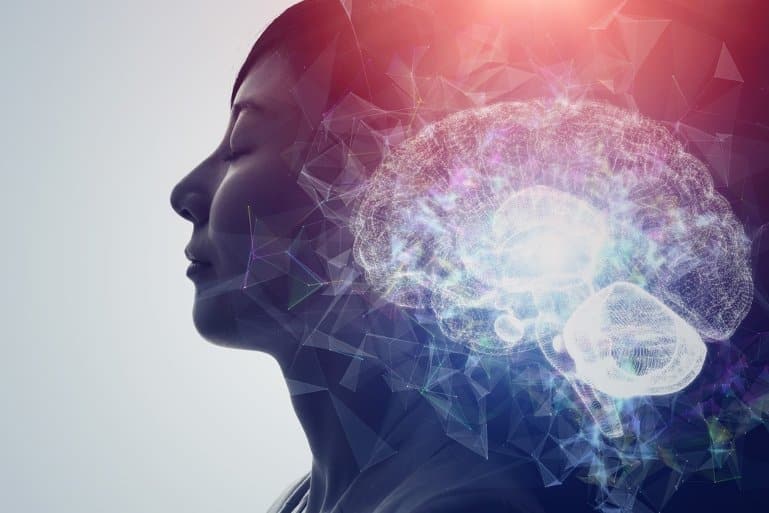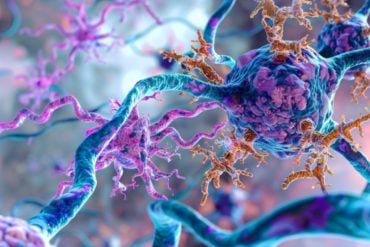Summary: Deep brain stimulation appears to be safe, effective, and provides symptom improvements for at least one year in patients with treatment-resistant schizophrenia.
Source: Johns Hopkins University
Managing schizophrenia is a lifelong process, and although there’s no cure, it can be treated with medications and therapy. However, one-fifth to one-half of patients with schizophrenia who show severe symptoms don’t respond to medication. Now, Johns Hopkins Medicine researchers have found a novel way to treat patients who have treatment resistant schizophrenia by using the same type of deep brain stimulation hardware used to treat Parkinson’s disease and other movement disorders.
The case study, published online April 24 in Biological Psychiatry, details how this procedure targets the substantia nigra pars reticulata — a part of the brain that’s a key hub of circuits involved in control of learning, executive functions and behaviors, and emotions. When this part of the brain is modulated using deep brain stimulation, it showed the potential to alleviate treatment resistant schizophrenia symptoms.
“Deep brain stimulation could be a game-changer for schizophrenia patients who don’t respond to medication,” says lead author Nicola Cascella, M.D., assistant professor of psychiatry and behavioral sciences at the Johns Hopkins University School of Medicine, and faculty member at the Johns Hopkins Schizophrenia Center. “This is not a cure for schizophrenia. It’s an innovative way to treat the symptoms, and so far for our patient, the treatment is working.”
For the study, Cascella and his team treated a 35-year-old Caucasian woman who has treatment resistant paranoid schizophrenia, accompanied by obsessive-compulsive disorder. Her symptoms consisted of persistent auditory and visual hallucinations, thought broadcasting — a person believes his or her thoughts are audible — and persecutory delusions . Antipsychotic medications, including clozapine, failed to reduce her symptoms.

After one year of deep brain stimulation, the patient remains stably improved, with no significant complications or adverse reactions related to the implanted device. The patient reported immediate and complete resolution of chronic hallucinations right from the start of stimulation. As a result, she’s in the process of decreasing the dose of her antipsychotic medications and has an improved quality of life.
Schizophrenia is caused by a chemical imbalance and other changes in the brain. It tends to run in families and it usually starts in late adolescence and early adulthood. Each person may have a combination of symptoms that may include hearing voices and other type of hallucinations, having trouble thinking clearly and relating to others. Level of functioning and quality of life can be severely affected.
While long-term efficacy remains to be seen in larger trials, these results provide hope for patients with severe, treatment resistant schizophrenia, and they suggest that deep brain stimulation may be more effective for schizophrenia than response rates noted in multiple antipsychotic medication clinical trials.
About this schizophrenia research news
Source: Johns Hopkins Medicine
Contact: Marisol Martinez – Johns Hopkins Medicine
Image: The image is credited to Johns Hopkins Medicine
Original Research: Closed access.
“Deep Brain Stimulation of the Substantia Nigra Pars Reticulata for Treatment-Resistant Schizophrenia: A Case Report” by Nicola Cascella et al. Biological Psychiatry
Abstract
Deep Brain Stimulation of the Substantia Nigra Pars Reticulata for Treatment-Resistant Schizophrenia: A Case Report
Deep brain stimulation (DBS) is an effective treatment for Parkinson’s disease via modulation of motor corticostriatothalamic circuits (CSTs). CST connections to motor, limbic, and associative cortices are also promising DBS targets for Tourette syndrome, obsessive-compulsive disorder, and major depression. Schizophrenia (SZ) is a disorder with disruptions in limbic and associative CSTs.
One-fifth to one-half of SZ patients are treatment resistant (TR). DBS targeted at basal ganglia structures within limbic and associative CSTs could have the potential to alleviate TR SZ symptoms. The substantia nigra pars reticulata (SNr) functions as a major basal ganglia output of limbic and associative CSTs via ascending projections to the mediodorsal nucleus of the thalamus and limbic and associative cortices, ultimately closing the loop via descending inhibitory GABAergic (gamma-aminobutyric acidergic) projections to the ventral basal ganglia and SNr.
We postulated that the SNr may serve as a common node, modulating limbic and associative cortices through a projection to the mediodorsal nucleus of the thalamus. If so, this would make it a potentially effective target for DBS in TR SZ.







